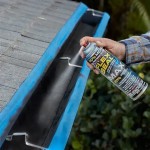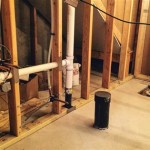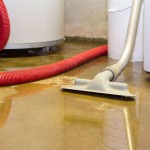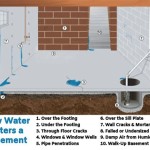How To Control Humidity In Basement
A humid basement can be a breeding ground for mold, mildew, and other moisture-related problems. Excess humidity levels can damage your belongings, create an unhealthy environment, and even lead to structural damage. If you're struggling with high humidity in your basement, there are several steps you can take to control it and improve the air quality in your home.
1. Identify the source of the moisture. The first step in controlling humidity is to identify where the moisture is coming from. Common sources of moisture in basements include:
- Water leaks: Check for leaks in your foundation, walls, plumbing, or roof.
- Condensation: Condensation occurs when warm, moist air comes into contact with a cold surface. This can happen when warm air from the upper levels of your home seeps into the basement and condenses on the cooler walls and floor.
- Groundwater: If your basement is below the water table, groundwater can seep into the basement through cracks in the foundation or walls.
- Poor ventilation: A lack of ventilation can trap moisture in the basement and lead to high humidity levels.
2. Fix any water leaks. Once you've identified the source of the moisture, take steps to fix any leaks. This may involve repairing cracks in your foundation or walls, tightening loose plumbing connections, or replacing a damaged roof.
3. Improve ventilation. Proper ventilation is essential for controlling humidity in your basement. Make sure your basement has adequate ventilation by opening windows and doors when possible. You can also install a dehumidifier or an exhaust fan to help remove moisture from the air.
4. Use a dehumidifier. A dehumidifier is a machine that removes moisture from the air. Dehumidifiers are available in a variety of sizes and capacities, so you can choose one that's right for the size of your basement. Run the dehumidifier continuously to help keep humidity levels in your basement under control.
5. Seal air leaks. Air leaks around windows, doors, and other openings can allow moist air to seep into your basement. Seal these leaks with caulk or weatherstripping to help keep the humidity out.
6. Insulate your basement walls. Insulating your basement walls can help to reduce condensation by creating a barrier between the cold walls and the warm air in your basement. Insulation can also help to keep your basement warmer in the winter, which can help to prevent condensation from forming.
7. Use moisture-resistant materials. When finishing your basement, use moisture-resistant materials, such as mold-resistant drywall and paint. These materials can help to prevent mold and mildew growth and can make your basement more resistant to moisture damage.
By following these tips, you can control humidity in your basement and create a healthier, more comfortable living environment.

3 Ways To Prevent Humidity In A Basement Wikihow

Moisture In Basements Causes And Solutions Umn Extension

How To Reduce Humidity In A Basement Thermopro Blog

How To Lower Your Basement S Humidity Level

Overview Dehumidification In The Basement Or Crawl Space

How To Lower Your Basement S Humidity Level

3 Ways To Prevent Humidity In A Basement Wikihow

How To Lower Your Basement S Humidity Level

6 Causes Of Basement Moisture How To Fix Them

How To Get Rid Of Humidity In A Basement Without Dehumidifier
See Also








